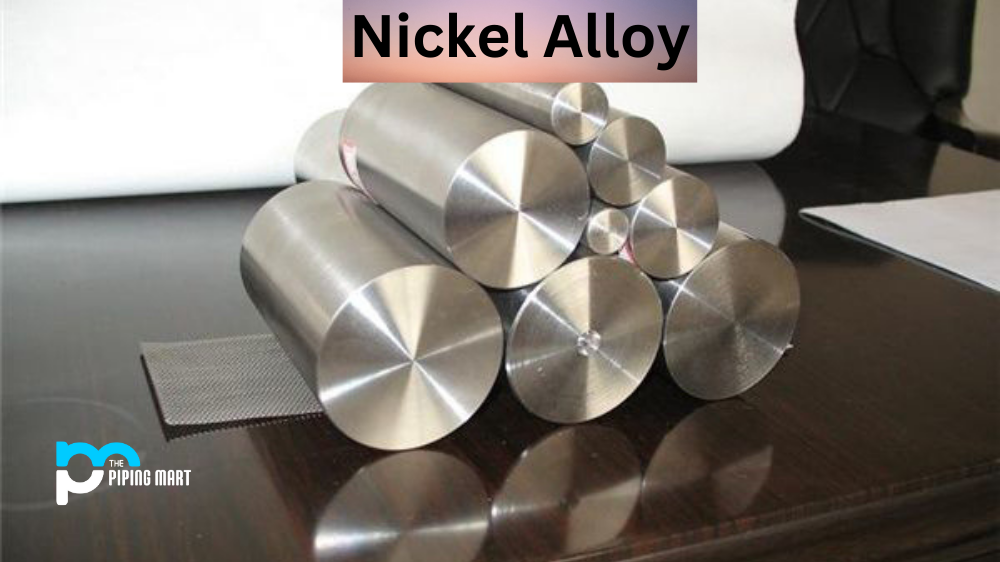Monel is a family of nickel-based alloys with excellent corrosion resistance and strength, making it an ideal choice for many applications. Its excellent weldability, strength, and high-temperature properties have made it an invaluable material in a wide range of industries. In this blog post, we’ll discuss the composition of monel, its chemical and mechanical properties, and its various uses.
Monel Composition
Monel metal is made up of two elements: nickel and copper. Depending on the grade of monel you’re working with, you will find different percentages of each element present in the alloy. Generally speaking, Monel 400 contains at least 63% nickel, while Monel K500 contains at least 65% nickel. Both grades also contain small amounts of other elements such as manganese, carbon, silicon, sulfur, iron, and aluminum.
Monel Chemical Composition
The chemical composition of Monel also varies depending on the grade. Monel 400 has a higher amount of copper than other grades due to its greater tolerance for corrosion in seawater applications. It also has lower levels of sulfur which help to improve its ductility when working with cold temperatures or forming operations. Meanwhile, Monel K500 has higher levels of aluminum and titanium, which make it more resistant to stress corrosion cracking in high-temperature environments where other grades would fail.
Monel Mechanical Properties
When discussing monel metal mechanical properties, we must consider both the tensile strength and yield strength, as these two parameters determine how strong an alloy is when subjected to different types of stresses or loads. Generally speaking, both Monel 400 and 500 have very good tensile strengths ranging from 80ksi to 190ksi depending on the grade, with yield strengths ranging from 40ksi to 175 ksi, respectively. Additionally, they both possess good elongation values meaning that they are capable of being deformed without breaking or fracturing under certain conditions. They also have good fatigue resistance meaning that they can withstand cyclic loading or vibrations without failure over time which makes them suitable for use in components subjected to dynamic loading, such as gears or bearings.
Monel Metal Uses
Due to its superior corrosion resistance properties compared to other alloys such as stainless steel or aluminum, monels are commonly used in applications where exposure to salt water or other corrosive environments is expected, such as marine environments (e.g., shipbuilding), offshore oil rigs, etc. Other common uses include petrochemical processing equipment (particularly those exposed to highly acidic liquids), valves & fittings, pressure vessels, etc. Additionally, because monels possess good ductility, they are often used for components such as springs or wire rope that require flexibility but still need good strength properties when subjected to tension loads over time.
Types of Monel Alloy
Monel alloys 400
Monel alloys 400 has a minimum of 63 percent nickel and 28-34 percent copper, with the significant addition of iron. It offers high strength and toughness across a wide range of temperature ranges. This is good for the aerospace industry, where operating temperatures can be extreme. Its resistance to atmospheric corrosion means that Monel alloy 400 is used to construct rivets in aluminium-skinned aircraft.
Monel alloy K-500
Monel alloy K-500 is a precipitation-strengthened version of Monel alloy 400, with titanium and aluminium added during the melting of the basic alloy mix. It offers increased strength and toughness over Monel alloy 400, making it useful for high-pressure situations. It retains roughly the same corrosion-resistant properties.
Uses of Monel in Aerospace
Monel alloys have a few essential benefits that make them suitable for use in the aerospace industry. First, they exhibit good resistance to many different types of corrosion. Monel alloys, which have an average copper inclusion of 30 percent, are more resistant to attack by oxidising media than alloys with a higher amount of copper present. The alloys are also resistant to reducing media and stress corrosion cracking. The corrosion-resistant properties make Monel alloys particularly suited to exhaust manifold and carburettors in aerospace projects.
Another useful aspect of the Monel nickel alloy range is its strength. The solid solution alloys can be hardened by cold working. They can also retain their shape and strength in high temperatures, which makes them perfect for aircraft frame structures, for example.
Typical applications in the aerospace industry include components for the landing gear, such as gears and chains, as well as various tubes and pipes. Monel alloys can also be used in combustion chambers, due to their ability to perform in high temperatures and under pressure. Monel alloys can also be used for rivets in the engine and exhaust systems, as well as for reliable safety wiring.
Conclusion:
In conclusion, monels are an incredibly useful family of alloys used across many industries thanks to their excellent corrosion resistance properties combined with relatively high tensile strengths and good fatigue resistance, making them suitable for use in dynamic loading applications such as valves & fittings, pressure vessels, etc. Additionally, their ability to be formed into complex shapes using cold-forming processes makes them ideal for components requiring intricate geometries, such as springs or wire ropes. All these factors together make monels a highly sought-after material in many industries, including petrochemical processing, shipbuilding & offshore oil rigs. If you’re looking for a reliable material that can withstand harsh conditions while still remaining flexible, then look no further than monels!

Pipingmart is B2B portal specializes in industrial, metal and piping products. Also, share latest information and news related to products, materials and different types grades to help business dealing in this industry.




